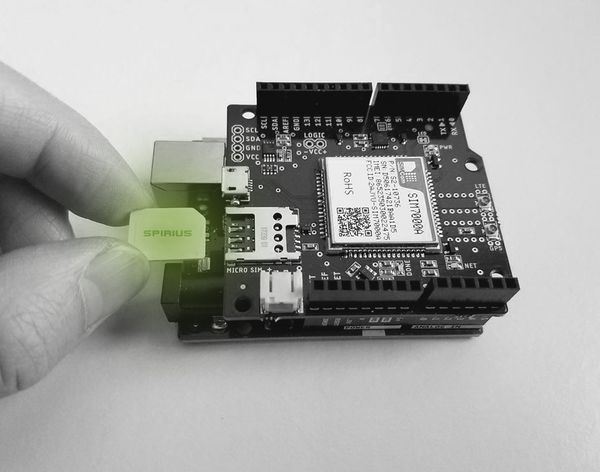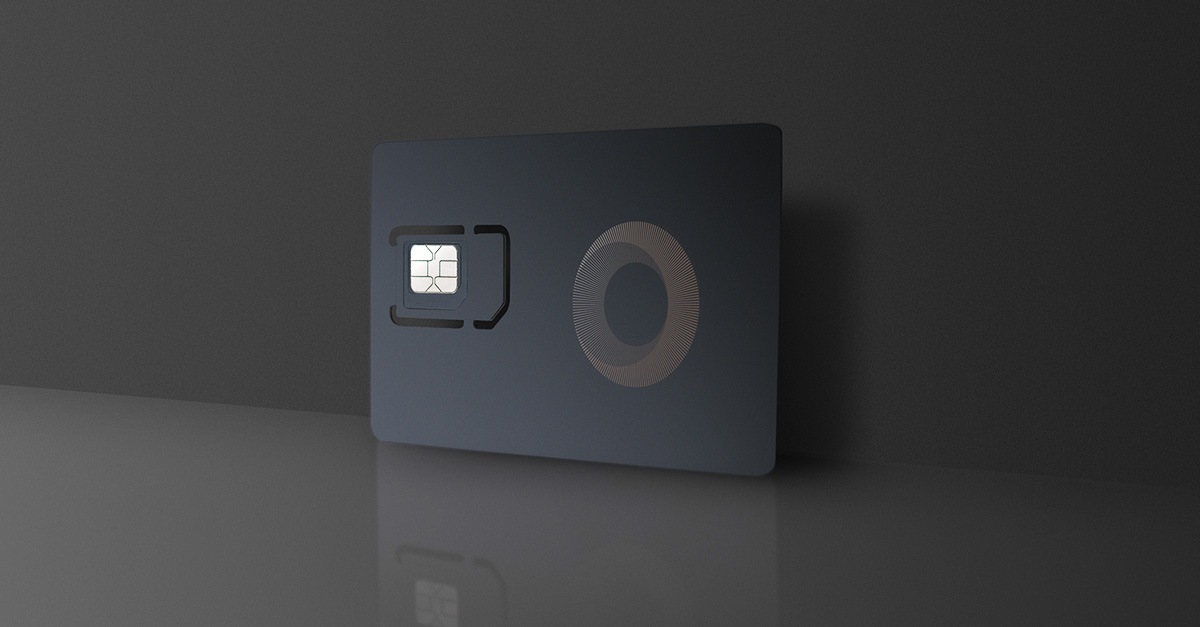IoT Connectivity Sim Enabling Internet of Things Connectivity
IoT Connectivity Sim Enabling Internet of Things Connectivity
Blog Article
Long Range IoT Connectivity Best Practices for IoT Network Design
The integration of the Internet of Things (IoT) in wearable units is transforming the know-how panorama. Understanding the best IoT connectivity options for wearable devices is crucial for developers and producers aiming to deliver seamless consumer experiences. Different connectivity solutions cater to a variety of wants varying from power consumption to knowledge switch speeds and network availability.
Bluetooth has emerged as a highly well-liked option for connecting wearable devices, mainly as a outcome of its low energy requirements and excessive compatibility with varied smart gadgets. This know-how allows devices like fitness trackers and smartwatches to seamlessly change data with smartphones and tablets. The recent developments, together with Bluetooth 5.0, have significantly improved vary and speed, making it a strong selection for many wearable purposes.
Resilient IoT Connectivity Options for Choosing IoT Connectivity
Wi-Fi is another sturdy contender, notably in eventualities where high data throughput is required. Wearable units that continuously stream high-resolution knowledge, corresponding to video or rich media content material, profit from Wi-Fi’s pace. The ubiquity of Wi-Fi networks permits for straightforward entry in city environments, enhancing performance for wearables designed for health or health monitoring.
Cellular connectivity has carved its area of interest, particularly in standalone wearable gadgets that don't require tethering to a smartphone. Technologies like LTE and LTE-M have made it possible for wearables to speak directly with cellular networks. This option provides a broad vary when customers enterprise outside, permitting units to send and receive knowledge even without local Wi-Fi. Cellular connectivity is particularly advantageous for emergency services, health-monitoring wearables, and even fundamental communication gadgets.
Resilient IoT Connectivity Basics of Global IoT Connectivity
Narrowband IoT (NB-IoT) stands out as a specialized connectivity option for units that have to send small quantities of knowledge occasionally. This makes it ideal for wearables that monitor health metrics or environmental situations. Leverage the low energy consumption characteristic of NB-IoT permits units to operate for prolonged durations on minimal battery life, making it a compelling choice for IoT-based wearables designed for long-term monitoring (Web Connectivity In IoT).
Zigbee and Z-Wave are excellent choices for wearables that function within smart residence ecosystems. While these technologies are typically fitted to residence automation, they'll still play a task in wearables that want to connect to other residence gadgets for specific use instances. For occasion, wearable health monitors might interact with smart residence devices like medicine dispensers to make sure medication adherence.
Mesh networking solutions allow wearables to create self-healing communication networks. In massive or crowded areas the place direct connections might endure from interference, mesh networking establishes redundant pathways for information to reach its vacation spot. This is especially helpful in eventualities corresponding to outdoor events or crowded sports arenas, the place a quantity of customers could also be utilizing their wearables simultaneously.
LPWAN technologies like LoRaWAN provide low-power wide-area community communications which are good for wearables utilized in distant areas. These choices excel in rural or off-grid settings, making them well-suited for agricultural monitoring wearables. By providing long-range communication capabilities with minimal energy consumption, LPWAN technologies address crucial needs for wearables in more isolated environments.
IoT Connectivity Platform Platform for IoT Connectivity Management
When deciding on connectivity choices, the precise use case of the wearable becomes paramount. Devices designed for lively sports may profit extra from Bluetooth or Wi-Fi due to their quick data-exchanging necessities. On the opposite hand, wearables meant for health monitoring may prioritize low power options like NB-IoT or LPWAN technologies, exploring long-term information assortment capabilities.
Security features must even be thought of when evaluating IoT connectivity options. With the rise in wearable gadgets accumulating delicate private knowledge, it is vital for producers to ensure that the chosen connectivity kind comes outfitted with sturdy security measures. Encryption and authentication protocols are essential to forestall unauthorized entry to wearable knowledge.
The scalability of a connectivity option is one other crucial aspect to ponder. As the demand for IoT wearables continues to rise, producers want to make sure that their connectivity selections can scale effectively. This encompasses not just the flexibility to handle increased information transmission but in addition ensuring community capacity to accommodate a rising user base with out compromising performance.
In the evolving world of fitness and health, the performance of wearables is continuously intensifying, making the selection of connectivity more essential than ever. Emerging technologies like 5G hold the promise of opening even more alternatives. With quicker speeds and lower latency, 5G can facilitate real-time information sharing between devices, amplifying the interactivity and immediacy anticipated from future wearable technologies.
IoT Connectivity Service Providers Quick Guide to IoT Connectivity

As the IoT panorama matures, collaboration amongst connectivity suppliers will probably turn into extra widespread. Wearables may begin adopting multi-connectivity solutions, permitting devices to modify between totally different networks based mostly on availability and task requirements. This hybrid strategy wouldn't only enhance reliability but also optimize energy consumption, enabling longer utilization between expenses.
Understanding the most effective IoT connectivity choices for wearable units is thus a multi-faceted see this website endeavor. By contemplating the operational requirements, user scenarios, and expertise developments, stakeholders could make informed decisions that meet each client expectations and business standards. The way forward for wearables lies in harnessing these diverse connectivity options to craft built-in, responsive, and user-centric technologies.

As technology continues to evolve, staying ahead of the curve turns into essential for all players concerned within the wearable market. The demands for knowledge assortment, real-time interaction, nb-iot connectivity and consumer security dictate that the chosen connectivity solutions align with current tendencies whereas readying for future advancements. Ultimately, one of the best connectivity resolution will facilitate a superior person expertise, ensuring wearable units aren't simply functional, but in addition important to day-to-day life.
M2M IoT Connectivity Comprehensive Guide to IoT Connectivity Technologies
- Utilization of low-power wide-area networks (LPWAN) corresponding to LoRaWAN provides extended coverage and long battery life for wearable units used in remote monitoring purposes.
- Bluetooth Low Energy (BLE) permits for fast knowledge transmission with minimal energy consumption, making it perfect for health trackers and health monitoring gadgets.
- Cellular IoT technologies, like NB-IoT or LTE-M, provide strong connectivity, enabling wearables to function independently without relying on smartphones, suitable for crucial purposes.
- Zigbee is optimal for wearable units that need to connect with smart home systems, providing a dependable mesh community for enhanced communication.
- Satellite communication permits wearables to function in extraordinarily distant places where traditional networks are unavailable, ensuring consistent information transmission for actions like outside sports activities.
- Wi-Fi 6 introduces improved bandwidth and efficiency, making it suitable for wearables requiring excessive knowledge charges in crowded environments, similar to augmented actuality purposes.
- Sigfox networks are beneficial for wearables as a outcome of their simplicity and cost-effectiveness, primarily specializing in sending small amounts of knowledge over long distances.
- 5G connectivity promises ultra-low latency and enhanced bandwidth, enabling superior functionalities in wearables, together with real-time health monitoring and immersive consumer experiences.
- NFC (Near Field Communication) facilitates secure, short-range communication for wearable gadgets, excellent for cost solutions or access management applications.
- Thread expertise combines some nice benefits of mesh networking with the safety and low power consumption features, making it a powerful candidate for smart wearable ecosystems.undefinedWhat are the preferred IoT connectivity options for wearable devices?undefinedCommonly used IoT connectivity choices for wearable units include Bluetooth, Wi-Fi, cellular (like LTE and 5G), Zigbee, and LoRaWAN. Each possibility has its personal advantages relying on range, power consumption, and information transfer wants.
How does Bluetooth examine to Wi-Fi for wearables?undefinedBluetooth is ideal for short-range connectivity and low energy consumption, making it suitable for fitness trackers and smartwatches. Wi-Fi provides higher bandwidth and broader web access, nevertheless it sometimes consumes extra energy and is better for gadgets that need fixed connectivity.
What are the benefits of utilizing cellular connectivity for wearables?undefinedCellular networks allow wearables to hook up with the web without needing a paired smartphone. This permits for real-time notifications, GPS monitoring, and independent operation, making it excellent for devices like smartwatches designed for health and safety functions.
How does battery life impact the selection of connectivity for wearables?undefinedBattery life is critical for wearable units. Low-power options like Bluetooth Low Energy (BLE) assist maximize usage time whereas nonetheless providing connectivity. Devices requiring frequent information transfer would possibly use higher energy options, necessitating larger batteries or extra frequent charging.
IoT Connectivity Service Providers Overview of IoT Connectivity Protocols

What function does safety play in IoT connectivity for wearables?undefinedSecurity is paramount in IoT connectivity as wearables typically deal with sensitive user data - Resilient IoT Connectivity. Options employing sturdy encryption protocols and secure authentication strategies help defend consumer information and stop unauthorized entry.
Can wearables connect to multiple IoT networks simultaneously?undefinedYes, many modern wearables can connect with a number of IoT networks, permitting them to modify between completely different connectivity options primarily based on availability and performance. This enhances flexibility and ensures steady monitoring and communication.
What factors must be considered when choosing a connectivity possibility for wearable devices?undefinedKey elements embody range, power consumption, information transfer velocity, compatibility with current networks, and the specific use case of the wearable. Analyzing these standards helps in deciding on the most appropriate connectivity resolution.
Cloud Connectivity In IoT Choosing the Right IoT Connectivity
Are there any emerging technologies which will improve IoT connectivity for wearables in the future?undefinedYes, emerging technologies like 5G will significantly improve IoT connectivity by offering larger information charges, decrease latency, and improved reliability. This is expected to enable more advanced purposes and functionalities for wearable gadgets.
How do regulatory standards affect connectivity options in wearables?undefinedRegulatory standards make sure that connectivity technologies comply with safety, privacy, and interoperability requirements. Adhering to these standards is crucial for producers to make sure usability and market acceptance whereas defending customers' rights and information.
What is the best connectivity option for medical wearables?undefinedFor medical wearables, cellular connectivity is often preferred due to its capability for real-time knowledge transmission and regulatory compliance. Secure and secure connections are essential in healthcare purposes for monitoring very important signs and providing timely alerts. Report this page